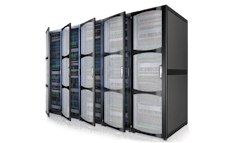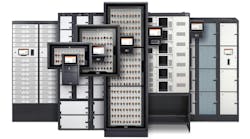In this edition of Voices of the Industry, Celina Berglund, Business Development Manager at Emcor discusses the positive impact managers and operators will see by choosing custom server cabinets and racks that are configured to their exact needs.
Celina Berglund – Business Development Manager, Emcor Enclosures
It’s reasonable to assume that, when configuring equipment inside a data center, the choice of server cabinet isn’t foremost in the owner’s mind. But that decision is more important than many people think. The wrong choice can sacrifice savings from floor-space and cooling efficiencies, limit configuration flexibility and increase the time operators spend maintaining equipment.
Data centers are dynamic places and never more so than today. Despite all the attention being paid to cloud computing, end-user spending on data centers is forecast to grow 6% this year to $200 billion and continue growing for at least the next four years, according to Gartner. And what happens inside the data center is changing rapidly as well. Edge computing is driving demand for low-latency servers, cloud vendors are installing versions of their infrastructure on customer premises and demand for high performance computing (HPC) gear to support artificial intelligence development is skyrocketing.
Data centers themselves are constantly changing as denser server configurations require specialized cooling, infrastructure is distributed across a tapestry of private and co-located sites and post-pandemic cost-control initiatives force owners to become more creative in wringing value out of their data center footprint.
All of these factors affect the choice of cabinet, yet many operators choose preconfigured options from catalogs on the assumption that all are all pretty much the same. In fact, the wrong choice of cabinet can restrict the operator’s flexibility to optimize layouts and server configurations as needs change.
Future-proof Investments
Configurable cabinets offer a wide range of options that can future-proof investments, reduce the need for workarounds and retrofits and even save energy. They can also save operators money. For example, data centers in high-rent districts like major metropolitan areas can use extra-tall cabinets to fit more server racks into the same floor space.
Configurable cabinets can be designed to match the exact space, power and cooling requirements of the equipment they contain. They can also be reconfigured as needs change. There are more customization options available than you might think.
- Cabinets can be built to specified heights, enabling users to increase compute power per square foot and take advantage of tight spaces that wouldn’t accommodate a standard cabinet.
- Shelves and drawers can be built to minimize the time needed to access server components, saving time and reducing injury risk.
- Retractable shelves and trays prevent equipment from protruding into aisles, a plus in tight spaces.
- Monitors can be put on a retractable arm that is mounted to an adjustable track on the side of the cabinet, opening up valuable rack space inside.
- Power distribution panels can be provisioned for the exact plug configurations and amperage needed to minimize the need for adapters and the risk of overload.
- A variety of cable management accessories can be applied to enable orderly organization of cables, minimizing the risk of errors that can cause downtime.
- Configurable illumination options allow users to cast light exactly where it is needed, reducing the need for awkward flashlights.
- Secure cabinets can accommodate a wide range of authentication needs, including multiple locks and biometrics.
- Seismic tie-downs that meet International Building Code standards protect occupants from falling objects during an earthquake and protect against catastrophic equipment damage.
- Configurable airflow patterns can extend equipment life, reduce failures and control air conditioning costs. In many cases, airflow patterns can be matched to the precise cooling requirements of the enclosed equipment.
- Refrigerated cabinets offer fine-grained cooling control. This makes it possible for HPC servers in the data center to be isolated and cooled at the cabinet level, avoiding the need to upgrade cooling capacity for the entire room.
Surprisingly Affordable
While many operators would benefit from customizability, they hesitate to consider configurable cabinets because of the myth that costs will be too high or delivery times too long.
“In reality, custom cabinets come in a variety of price ranges. It’s worth asking for a price quote before defaulting to a pre-configured cabinet, since you may be surprised how affordable customization can be.” Celina Berglund, Business Development Manager at Emcor Enclosures
Requested modifications usually add just a week or two to delivery times when the cabinets are manufactured in America. In contrast, many pre-configured cabinets are ordered from Asian suppliers and may take as long as four months to arrive or longer because of record backlogs of shipping traffic triggered by COVID-19.
The facts about configurable cabinets stand in stark contrast to the myths. Customization need not be expensive or time-consuming, and when circumstances demand that space be reconfigured, you’ll be glad you had the foresight to plan for change.
This article was submitted by Celina Berglund, the Business Development Manager at Emcor Enclosures. Contact Emcor to learn more about the benefits of custom cabinets.


